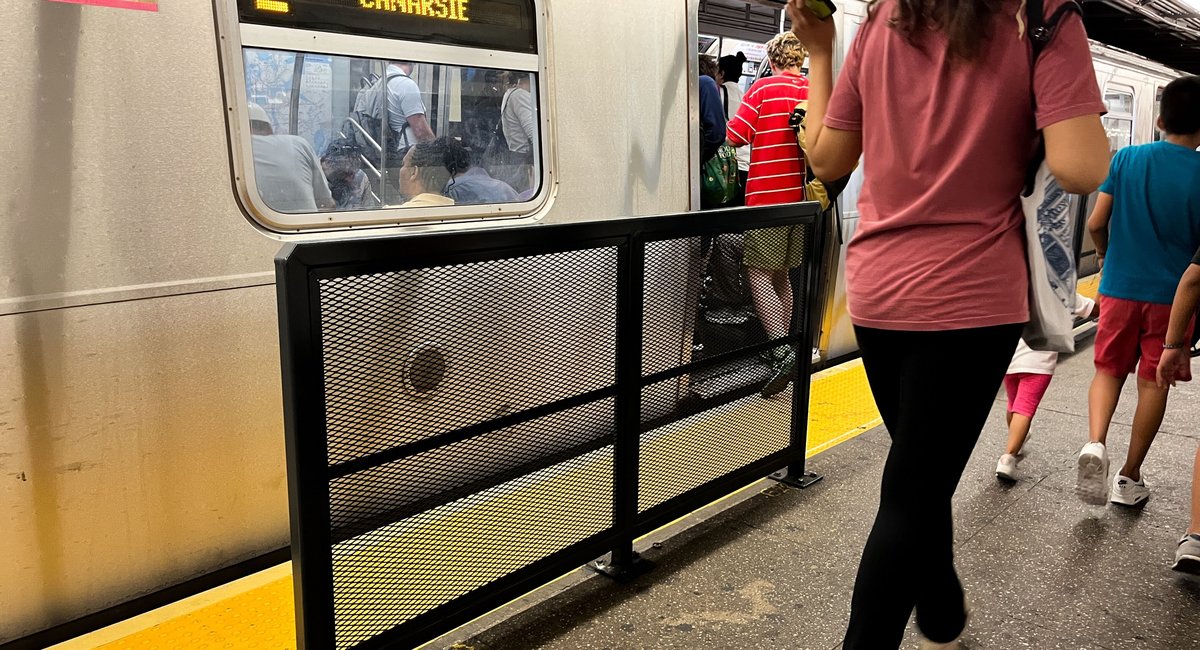The MTA has, since the start of 2024, installed new metal barriers on subway platforms in Brooklyn and Manhattan — and transit officials said they plan to add even more by the end of the year.
The barriers are now in place at platforms in 10 stations, half of which are on the L line. They’re a little more than 4 feet tall, and are fixed in sections that do not line up with locations where subway car doors open. There is room between each barrier for passengers to get on and off trains.
The new equipment is a nimble solution by the MTA to keep riders from falling — or being shoved — onto subway tracks. The MTA faced calls to make its subway platforms safer after the high-profile 2022 murder of Michelle Alyssa Go, who died after she was shoved in front of a train at the Times Square station by a man who was later deemed emotionally disturbed and not fit for trial.
Following Go’s death, the MTA published a study looking into whether it could install full-sized doors on its platforms that only open when a train arrives — similar to those in place on the AirTrains at JFK and Newark airports.
The report found that type of barriers could only be installed in 128 of the MTA’s 472 stations, and it would be prohibitively expensive, at $7 billion.
The agency instead moved forward with a cheaper alternative last January, installing the first metal barriers at 191st Street on the 1 line.
An MTA report on track intrusions in 2022 noted the barriers are helpful, but warned they could be hazardous as well.
“While these smaller interventions might be helpful in preventing certain track intrusions, MTA safety experts are concerned that they may risk causing injuries, for instance in the event that a passenger gets caught in a train door and is dragged down the platform,” the report noted.
Still, Sam Schwartz — a former New York City traffic commissioner and transportation department chief engineer — argues it’s better than doing nothing at all.
“Sometimes low-tech, low-cost measures are best, especially now that congestion pricing is on hold,” he told Gothamist.
The MTA also sees the smaller barriers as a simple way to make riders safer — and says it will continue to roll them out at more stations across the transit system.
“The goal is to install at one to two stations a month, depending on timing for the delivery of materials,” MTA spokesperson Kayla Shults wrote in an email.
